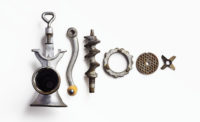What if you had a storeroom full of parts that you didn’t need but also had no way of managing them, no process for identification and removal? This is a situation faced every year by thousands of companies worldwide and yet one for which few companies develop a genuine, lasting solution.
One of the peculiarities of spare parts inventory management is that, generally, the supply chain is established to operate only one way. That is, to put items into inventory and then into the hands of the user. Very few companies have put much thought into the processes for reversing that flow, to remove obsolete items from the inventory and dispose of them. Yet this task is fundamental to managing spare parts obsolescence and, by extension, is fundamental to spare parts inventory management.
Sure, people talk about spare parts obsolescence a lot. They wring their hands at the obvious waste of money and they somehow convince themselves (and their bosses) that reacting to obsolescence is a real management plan. It is almost like people see planning for the management of obsolescence as planning for failure. This is the big lie of spare parts obsolescence.
The truth is, the establishment and application of processes and reviews that address excess and obsolete spare parts in a proactive manner is a sign of a sophisticated spare parts management organization, not failure.
Nobody wants to write off inventory that has been purchased and not used, but it is inevitable. Why not prepare for this, not just in an accounting sense through accruals for write-downs, but through appropriate and proactive end-of-life inventory management?
The reality is that it is not as hard as it may seem. It just takes some forethought and some realistic decision-making.
Ironically, the proactive management of spare parts obsolescence starts at the beginning of the spare parts management life cycle, not at the end. This is when the spare parts are initially purchased. Too often, the parts purchased at this “create and stock” phase are still on the shelf years later, unused and unneeded. To address this, the initial stocking quantity decision-making needs to be addressed. This means making realistic stocking decisions based on a life-cycle perspective, not the ad hoc, self-interested or emotional decision making that is too often applied.
One of the simplest things to do with spare parts is to ignore them. Excess and obsolete parts just stay where they are. They don’t make any fuss. They don’t make any noise. They do, however, take up space. They gather dust. They deteriorate. They need counting at inventory time. They may even need some maintenance. They also set a bad cultural example. A storeroom of excess and/or junk sends a message that mediocrity is OK.
Identifying and rooting out obsolete spare parts is a good thing but it is a reactive approach that doesn’t solve the real problem. It is an attempt to cure a symptom. A proactive approach to spare parts obsolescence is to admit that it will happen and work out how you will work to prevent, rather than cure the problem. This is not planning for failure; it is planning for success. Don’t fall for the big lie of spare parts obsolescence. NP





Report Abusive Comment